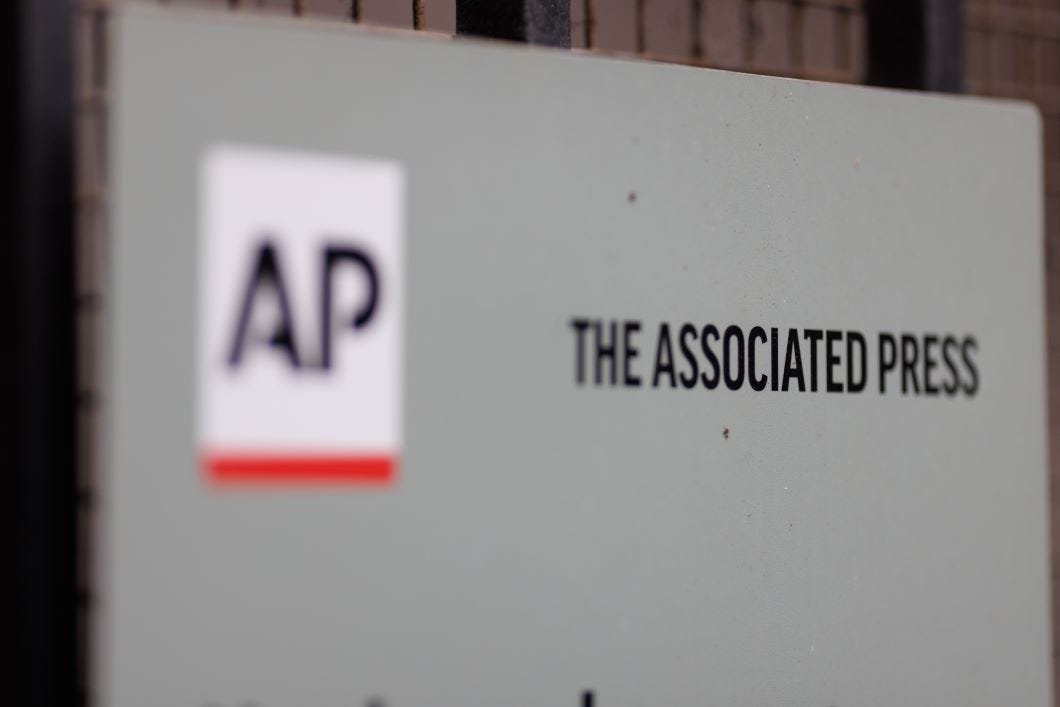Associated Press refuses to correct anti-gun story — another symptom of its decline
The AP is as biased against guns as any other corporate media source.
by Lee Williams
Founded in 1846, the Associated Press describes itself as “the most trusted source of fast, accurate, unbiased news in all formats and the essential provider of the technology and services vital to the news business.” More than half of the world’s population is exposed to AP stories every day, the wire service claims.
Associated Press members, traditionally newspapers, pay an annual fee based on their circulation for access to AP wire stories. Larger newspapers pay more, sometimes millions of dollars.
The AP has always touted its ethical principles as the reason why it deserves the public’s trust.
“We are The Associated Press. We have a long-standing role setting the industry standard for ethics in journalism. It is our job — more than ever before — to report the news accurately and honestly,” the AP claims on its “News Values and Principles” page.
When the Associated Press makes an error, the damage is compounded because its wire stories have such a wide reach. They’re pushed out to AP members on multiple platforms — print, radio, television and digital — so corrections are a big deal, or at least they used to be.
Nowadays, however, whenever one of its correspondents writes about guns or the Second Amendment, the AP is just as inaccurate and just as biased as any other member of the legacy media — another symptom of its overall decline.
The errors
An AP story published earlier this month titled “Why mass shootings and violence increase in the summer,” contained errors of fact and fake data. It was written by AP correspondent John Seewer, who according to his bio writes about “bizarre, crazy and interesting happenings in northern Ohio and beyond.”
“The Gun Violence Archive, which tracks mass shootings involving four or more people regardless of whether they died, shows June, July, and August have had the highest total number of mass shootings over the past decade. The lowest totals were from December through March. Independence Day topped the list with 58 mass shootings over the last 10 years — closely followed by July 5, according to the archive.” Seewer wrote.
His story also claimed teens with idle time on their hands, alcohol consumption and a lack of air conditioning can cause mass shootings.
We have debunked the Gun Violence Archive more than two-dozen times for its anti-gun bias and its fake data. Seewer should have known this. A simple Google search would have shown there were significant problems with his main data source.
He also could have compared and contrasted the GVA numbers with a database maintained by Northeastern University, USA TODAY and his employer, the Associated Press. The two datasets are vastly different. According to the Gun Violence Archive there have been 284 mass shootings in 2024. The AP database says there have been 20 mass killings, of which 14 were shootings. Seewer actually cited both databases in the story but ignored the vast differences in their numbers.
According to AP’s ethics page, data must be vetted for “integrity and validity.”
“Data should be assessed in terms of the methodology behind it, sample sizes, when it was collected and the availability of other data to confirm or challenge it. Combining more than one dataset into a presentation should be done carefully and transparently,” AP’s ethics state. “We must distinguish carefully between correlations and causal relationships.”
The Second Amendment Foundation sent a correction request to the AP via a portal on their website. The request included a link to Seewer’s story, as well as previously published information about the Gun Violence Archive.
“Thank you for your comment to our newsroom. If relevant, someone will get back to you as soon as possible,” The AP said in an automated email reply.
The AP has not commented further. The story is still available on the AP’s website and has not been corrected.
Troubled times
The Associated Press took a massive financial hit just four months ago, when newspaper giants Gannett and McClatchy cited dire financial pressures and cancelled their AP contracts. Almost immediately more than 230 newspapers stopped paying annual fees.
The AP was “disappointed,” according to its spokeswoman Lauren Easton.
“We appreciate that these are difficult decisions to make and deeply understand the challenges the news industry faces,” Easton said in a statement. “At the same time, this would be a disservice to news consumers across the U.S. who would no longer see fact-based journalism from the AP.”
The AP tried to downplay the significance of the loss by claiming only 10% of its revenue came from newspaper fees, because the AP was able to diversify by offering direct-to-consumer services and by creating an e-commerce site, AP Buyline, which few have ever heard of. But nearly everyone with even a smidgen of daily newspaper experience laughed at this claim.
The AP took a hard hit right in the wallet and it shows. They are not what they used to be. Their standards have dropped, and their once-vaunted ethical guidelines have become an afterthought.
Nowadays, it is difficult to be an informed news consumer, especially if you value the right to keep and bear arms. When a story involves guns or the Second Amendment, what passes for news is usually propaganda — finely honed and served up with a purpose.
Many Americans have found alternative news sources. This is the main reason why the Associated Press and other corporate media sources are hemorrhaging readers and viewers. The legacy media’s decline is self-inflicted. Their continued adherence to pushing false narratives did them in.
The Second Amendment Foundation’s Investigative Journalism Project wouldn’t be possible without you. Click here to make a tax-deductible donation to support pro-gun stories like this.






Unfortunately, AP, along with most "news" networks and papers like WP and NYT have simply become servants of the Democratic Party. That's why many readers/viewers seeking the truth have abandoned these outlets. Ask yourself, if you were in Berlin in 1936 would you believe everything you read in "Der Angriff" (NSDAP party newspaper)? If you were in Moscow in 1975 would you believe everything you read in "Pravda" (CPSU party newspaper)? If not, why would you trust outlets like AP or MSNBC?
Besides subscriptions, where does the AP's money come from? It's an important question. https://www.crunchbase.com/organization/associated-press